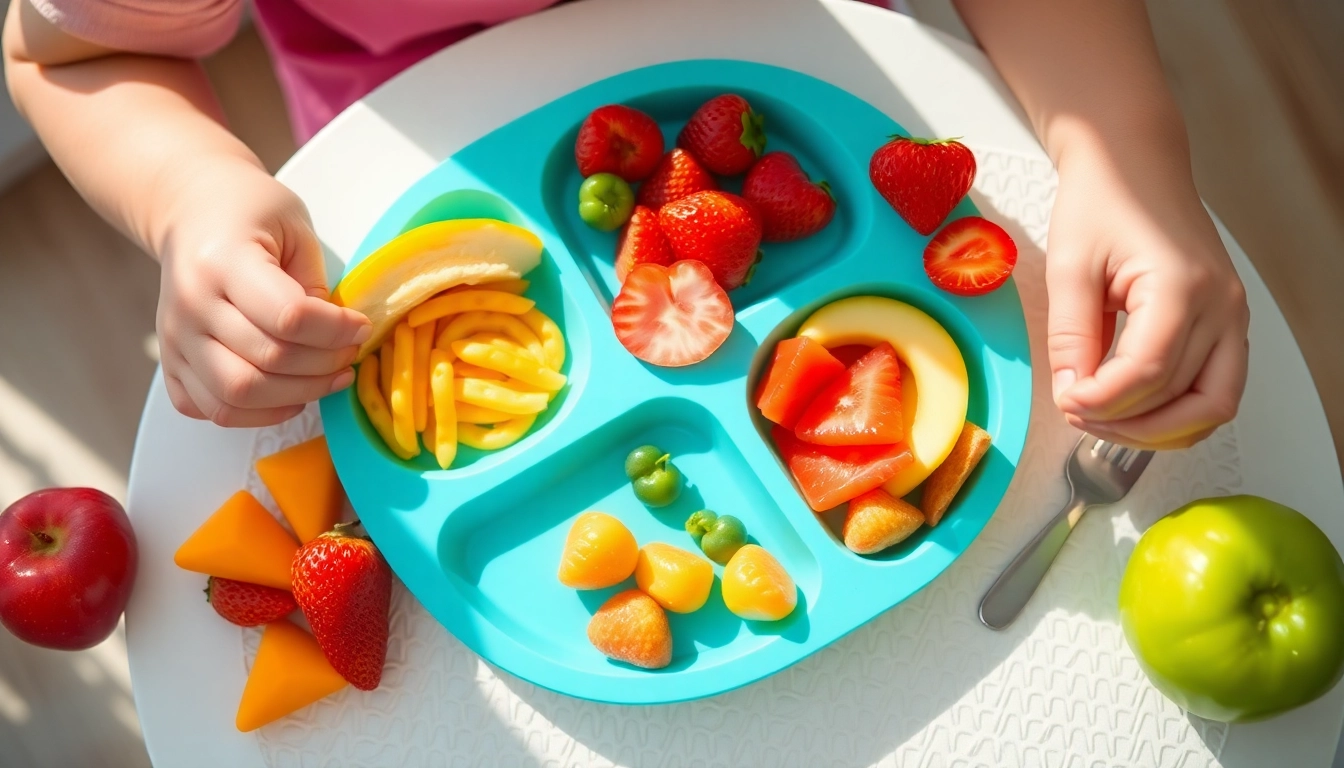Understanding the Benefits of Silicone Divided Plates for Self Feeding
In the journey of nurturing a child’s independence and promoting healthy eating habits, the right feeding tools play a pivotal role. Among these, the silicone divided plate for self feeding has gained recognition for its safety, functionality, and developmental benefits. Designed to support both parents and children, these plates facilitate a positive mealtime experience, encouraging children to develop autonomy while ensuring safety and ease of use. This comprehensive exploration delves into the key advantages of silicone divided plates, their safety features, and how they foster essential developmental skills.
Safety Features and Certifications of Silicone Plates
When selecting feeding accessories for infants, safety is non-negotiable. Silicone divided plates are constructed from food-grade silicone, a material renowned for its non-toxic, BPA-free, and phthalate-free properties. Certifications from regulatory authorities such as the FDA and European Food Safety Authority (EFSA) affirm the compliance of these products with strict safety standards, ensuring they are free from harmful chemicals that could leach into food.
Moreover, the durability and flexibility of silicone mean it is resistant to cracking, shattering, or warping over time, reducing the risk of ingestion of small fragments. Many silicone plates also come with features like suction cups to prevent slipping or tipping, further enhancing safety during mealtime. These characteristics collectively make silicone divided plates a trustworthy choice for parents who prioritize health, safety, and product certification.
Promoting Independence Through Self Feeding
Encouraging children to feed themselves is fundamental for fostering independence and confidence. Silicone divided plates are designed with multiple compartments, enabling children to explore various foods simultaneously. By offering a structured yet accessible surface, these plates facilitate the development of fine motor skills, hand-eye coordination, and self-regulation in portion control.
Children learn to pick up different items—such as fruits, vegetables, or grains—using their fingers or utensils, which boosts their dexterity and preparatory skills for future eating routines. Additionally, these plates help children associate mealtime with autonomy, making them more willing to engage in self feeding, leading to improved eating habits and reduced reliance on parental assistance over time.
Ease of Cleaning and Durable Design for Busy Parents
An essential consideration for active parents is the ease of maintenance of feeding accessories. Silicone divided plates excel in this area due to their non-porous surface, which resists stains and odors, and their compatibility with top-rack dishwasher cleaning. Unlike plastic or ceramic dishes, silicone does not retain food residues, simplifying hygiene routines and reducing the risk of bacterial growth.
The durability of silicone also means these plates withstand daily use, accidental drops, and microwave or freezer exposure without damage. Their resilient nature ensures a long lifespan with minimal upkeep, making them an efficient investment for busy households seeking reliable, safe, and hygienic feeding solutions.
Choosing the Right Silicone Divided Plate for Your Child
Key Features to Consider: Size, Compartments, and Material Quality
When selecting a silicone divided plate, size and compartment configuration should align with your child’s age and eating habits. Smaller, ergonomically designed plates suit infants just beginning to self feed, while larger models provide versatility for older children. The number of compartments varies; some have three or more, allowing for a balanced presentation of different food groups, fostering variety and portion control.
Material quality is equally crucial. Opt for plates with certifications such as FDA or LFGB, ensuring compliance with safety standards. Ensure the silicone is free from BPA, phthalates, lead, and other toxins. Additionally, non-slip features like suction bases enhance stability during feeding, particularly important for younger children unsteady on their feet.
How to Support Developmental Milestones with Plate Selection
Choosing a plate that adapts to your child’s developmental stage can promote growth. For example, plates with gently sloped sides assist in scoop-and-fetch movements, aiding hand coordination. Multi-compartment designs introduce the concept of meal balance and teach children to recognize different food textures and flavors, supporting sensory development.
Comparing Different Styles: Flat, with Suction Cups, and Multi-Compartment
Flat plates are suitable for older children and serve as a transition away from divided options. Plates with suction cups are ideal for toddlers; their grip prevents slipping, supports independent eating, and minimizes messes. Multi-compartment designs, such as rainbow-shaped or three-slice plates, are visually appealing and encourage children to explore diverse foods in a fun, engaging way.
Integrating Silicone Divided Plates into Your Feeding Routine
Tips for Introducing Self Feeding Habits
Start by introducing the plate during calm, positive mealtime experiences. Demonstrate how to use the utensils and encourage your child to imitate. Offer a variety of colorful, appealing foods divided into the compartments to stimulate curiosity. Consistently place the plate in front of your child, allowing them to explore and develop independence gradually.
Creating Balanced and Appealing Meal Presentations
Use vibrant, nutrient-dense foods to fill each compartment, making meals visually stimulating and nutritionally balanced. For example, combine fruits, vegetables, proteins, and grains to promote comprehensive growth. Using the compartments effectively teaches children portion control and helps them understand meal diversity, enhancing their eating enthusiasm.
Managing Messes and Teaching Cleanliness
Despite the best planning, messes are inevitable. Utilize silicone plates with suction cups to minimize accidents and solidify cleanup routines. Teach children to wipe their plates and utensils afterward, fostering hygiene habits and responsibility. Involving children in cleaning up can reinforce positive behaviors and independence.
Maximizing Benefits: Nutrition, Growth, and Parent Peace of Mind
The Impact of Organized Meals on Children’s Nutritional Intake
An organized mealtime setup with diverse, colorful compartments encourages children to try new foods and eat balanced diets. Structured presentation reduces picky eating, ensuring children receive essential nutrients for growth and development. Consistent routines and appealing visual cues foster healthy eating patterns that can last a lifetime.
Supporting Motor Skills Development with Appropriate Utensils
Silicone utensils like ergonomic spoons and forks complement divided plates, aiding in the development of fine motor skills. Encourage children to grasp, scoop, and transfer food independently, which enhances muscle strength and coordination. Proper utensil selection paired with a suitable plate facilitates smoother transition from hand feeding to using cutlery confidently.
Building Positive Mealtime Routines for Lifelong Habits
Creating a consistent, pleasant dining environment with attractive, functional plateware promotes positive associations with eating. Reinforce patience, sharing, and gratitude during meals, which builds social and emotional skills. Establishing these routines early sets the foundation for balanced, lifelong eating habits and a healthy relationship with food.
Real Life Success Stories and Expert Recommendations
Parent Testimonials on Using Silicone Divided Plates
Many parents report significant improvements in their child’s willingness to self feed since adopting silicone divided plates. One parent shared, “My toddler loves the rainbow design, and now he insists on feeding himself. Meal time has become more enjoyable and less messy.” Such testimonies highlight the role of engaging design and reliable functionality in promoting independence.
Pediatrician Insights on Promoting Self Feeding
Child development experts emphasize that encouraging self feeding with appropriate tools enhances motor development, independence, and nutritional intake. Pediatricians recommend choosing safe, durable, and easy-to-clean utensils and plates to foster positive mealtime experiences and reduce frustration for both children and parents.
Best Practices from Childcare Professionals for Effective Use
Childcare professionals advise introducing new utensils and plates gradually, modeling behavior, and maintaining patience. Keeping meal times consistent and free of distractions helps children focus and develop good eating habits. They also recommend involving children in setting the table, cleaning, and choosing their plates to increase engagement and ownership.

